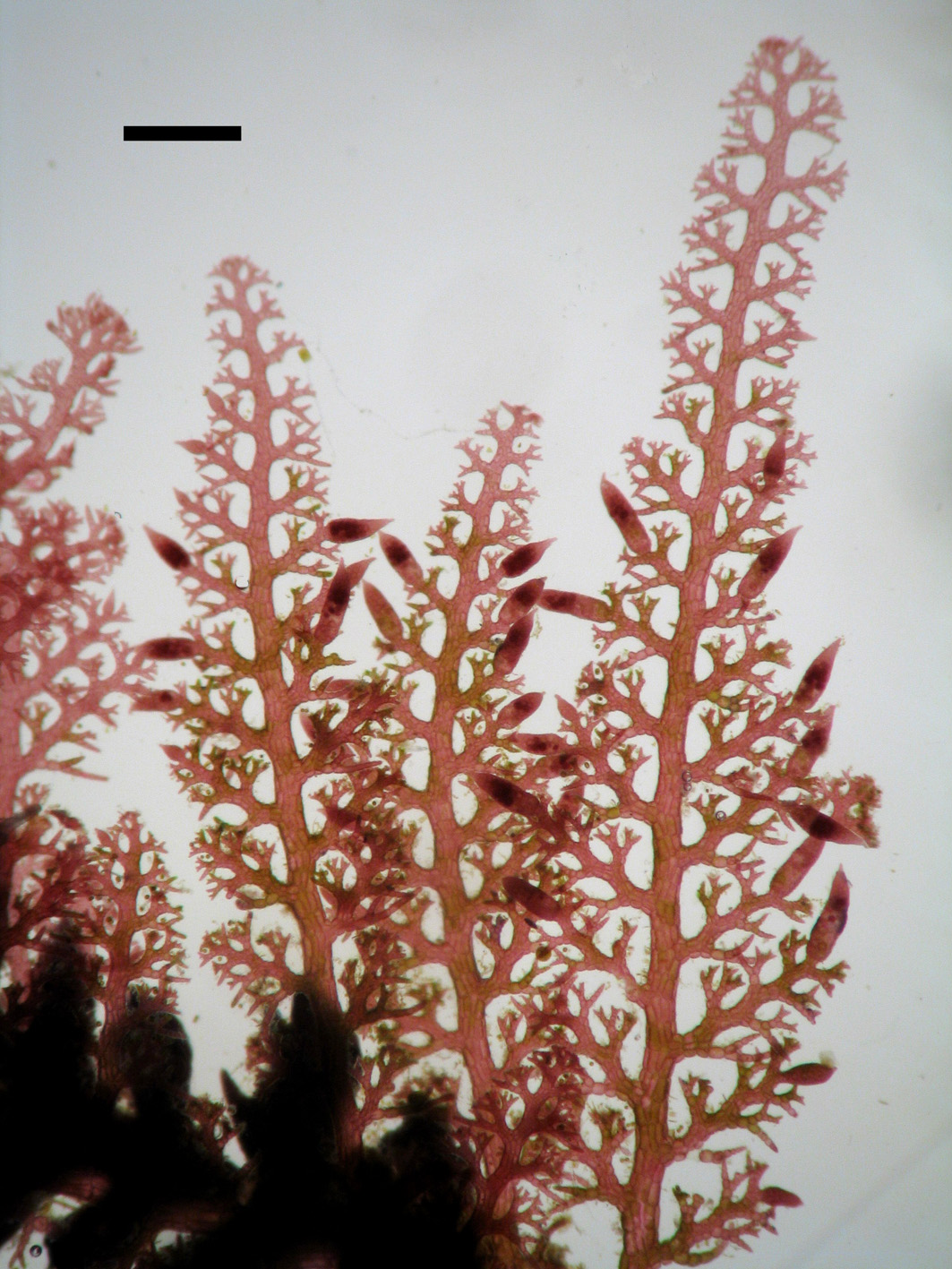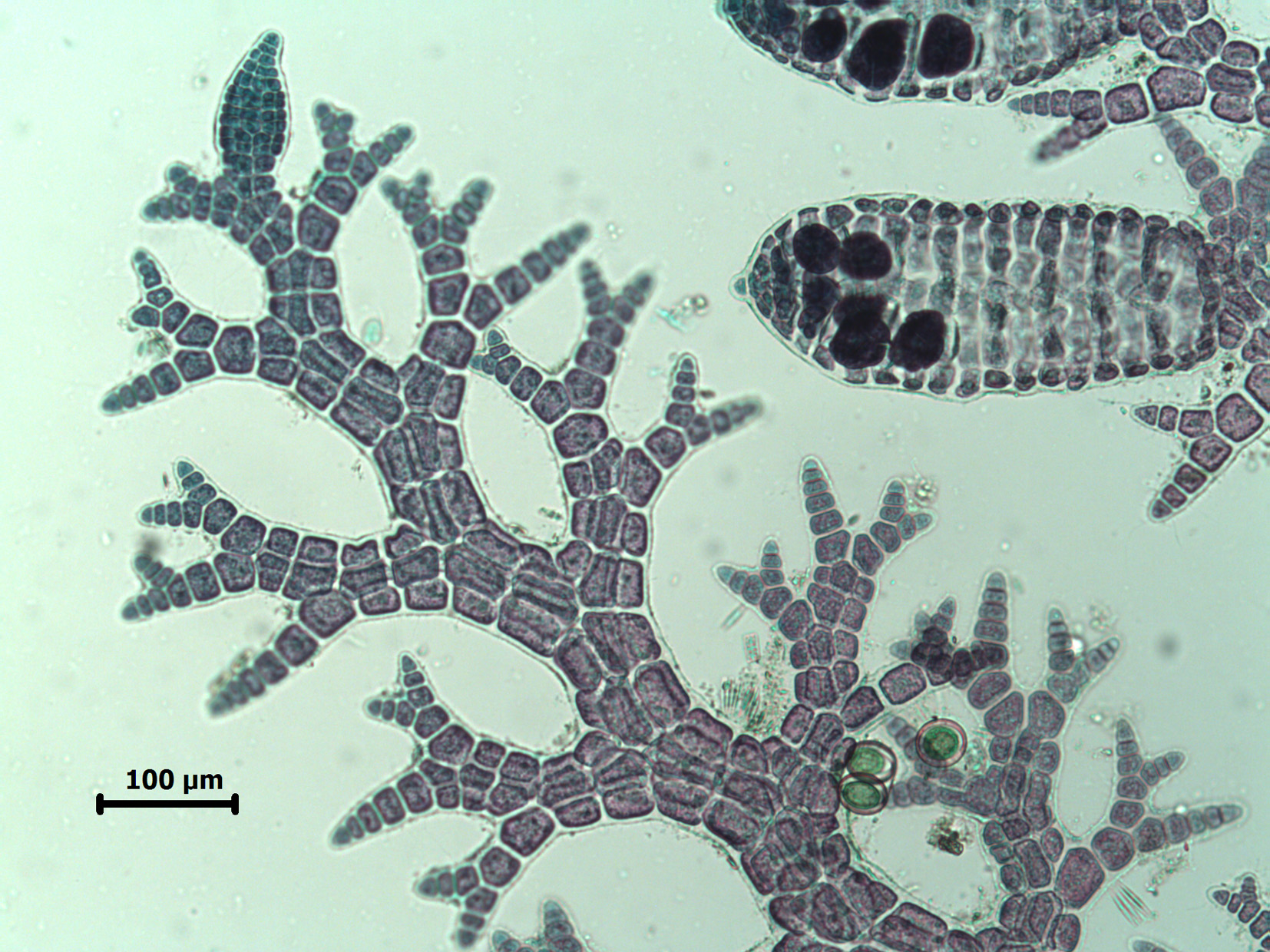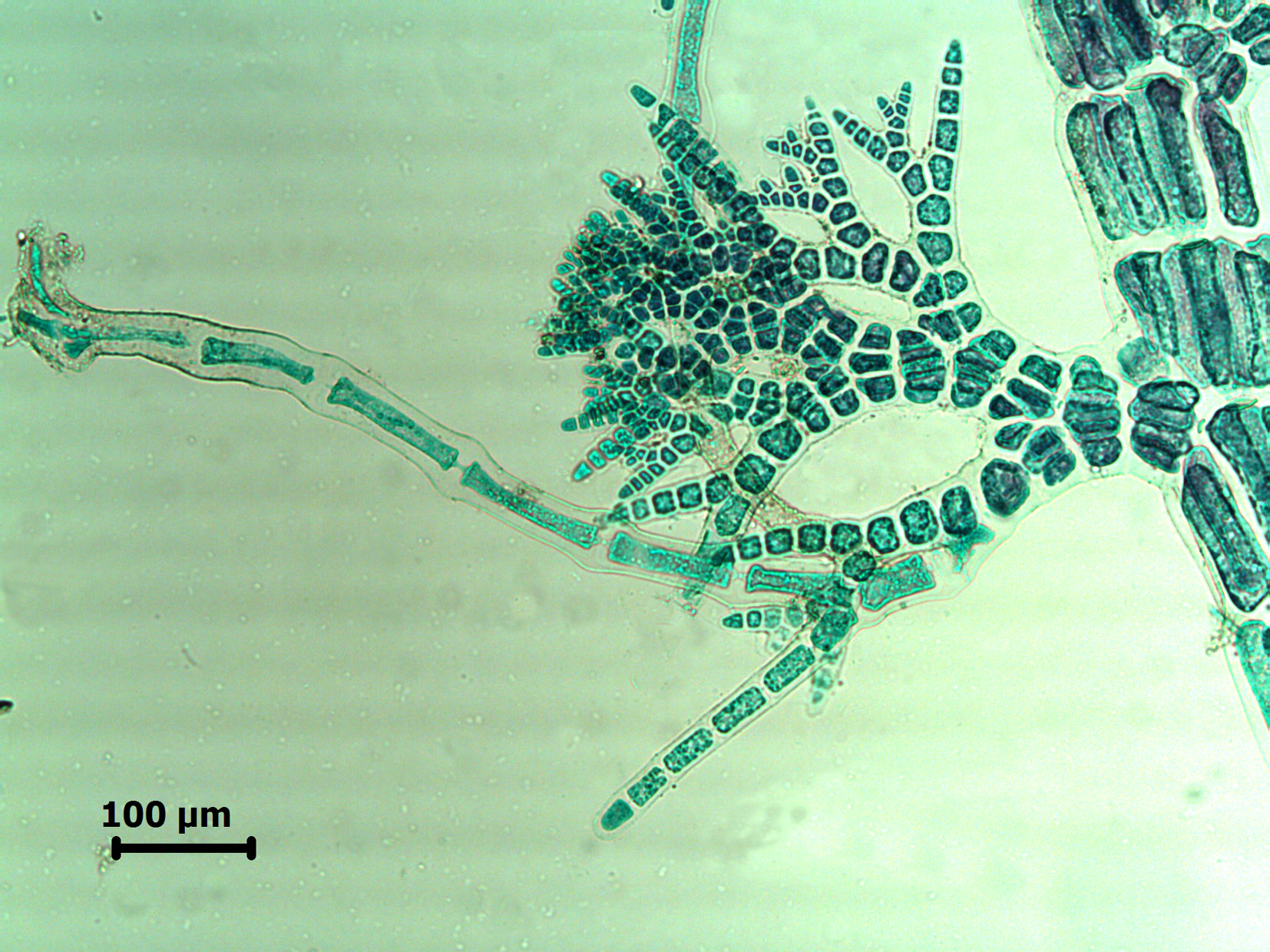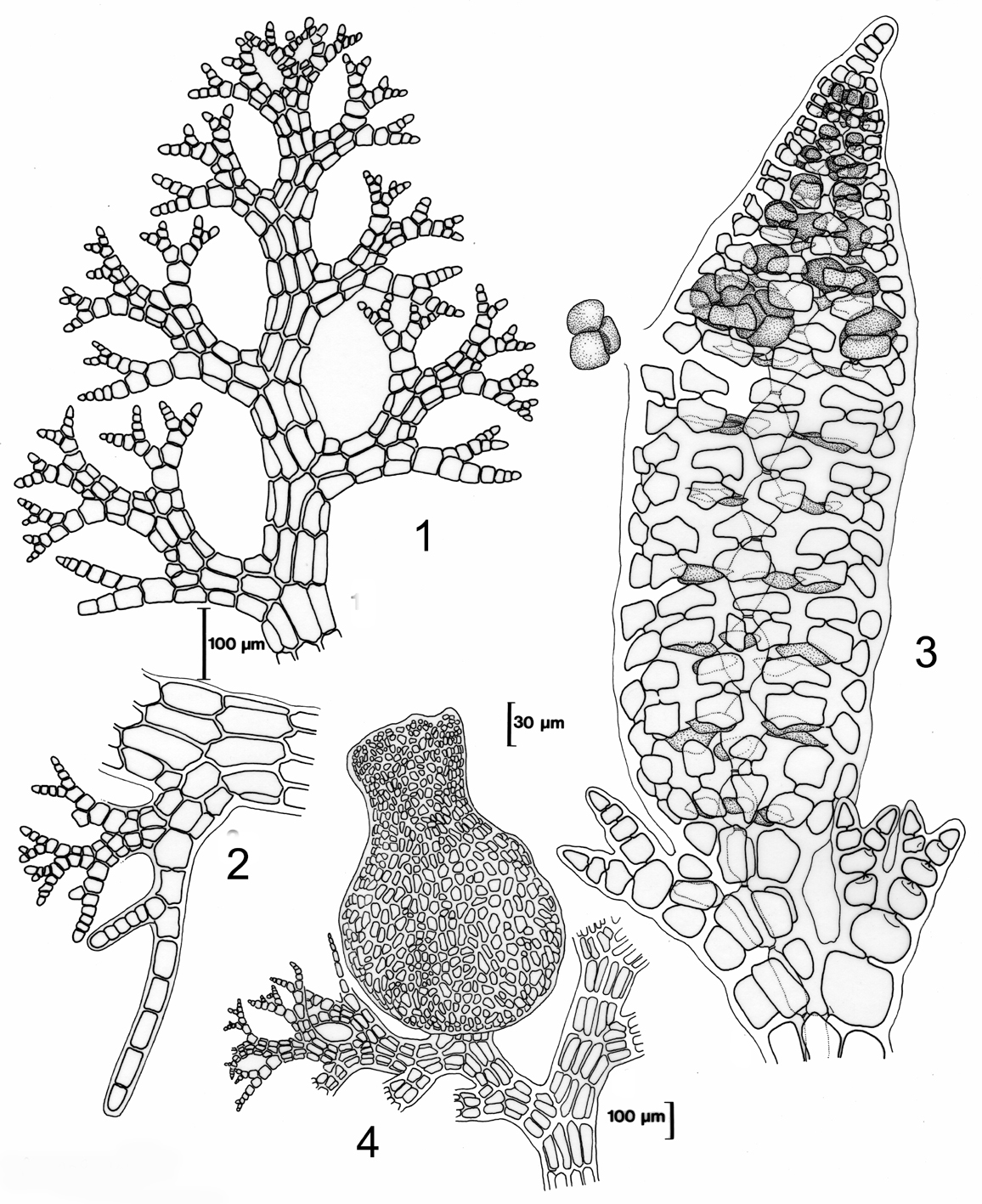Seaweeds of the South African South Coast


Order Ceramiales
Family Dasyaceae
Heterosiphonia dubia (Suhr) Falkenberg 1901: 639-642
Plants up to several cm long, often partly or largely prostrate, axes attached by modified proximal ramuli of the pseudolaterals. Main axis up to 200 µm in diameter; pseudolaterals alternate, distichous, arising from every second segment. Segments of main axis with 7 or 8 pericentral cells, cortication absent. Pseudolaterals several times subdichotomously branched every other segment; only ultimate 2-3 ramifications monosiphonous, 2-4 cells long with blunt apices; other segments polysiphonous but often with reduced number of pericentral cells (usually 6). Tetrasporangial stichidia developing as one arm of an ultimate or penultimate dichotomy of a pseudolateral. Stichidia conical to cylindrical, up to 1300 µm long and 200 µm in diameter, segments with 5 pericentral cells and tetrasporangia. Sporangia globose, ca. 50 µm in diameter, tetrahedrally divided, pericentral cell with two groups of two cover cells. Cystocarps urn-shaped, ca 1 mm long.
Collections, ecology and regional distribution
Recorded from Paternoster on the west coast to the Scottburgh area of the Kwazulu-Natal coast (11-50). Fairly common in the lower eullitoral zone, usually as a component of mixed algal turfs.
World distribution: also recorded from Namibia (Rull Lluch 2002).
Type locality: Either False Bay (Western Cape Province) or Algoa Bay (see note in Silva et al. 1996).

Heterosiphonia dubia with tetrasporangial stichidia, dissecting microscope photograph of fresh specimen, Port St Johns. Scale bar 1 mm.

Heterosiphonia dubia with tetrasporangial stichidia, stained slide.

Heterosiphonia dubia, showing pseudolateral with developing attachment structure (stained slide).

Heterosiphonia dubia. 1. Thallus apex. 2. Pseudolateral with developing attachment structure. 3. Tetrasporangial stichidium. 4. Cystocarp. Reproduced from Stegenga et al. (1997).
References Heterosiphonia dubia
Falkenberg, P. 1901. Die Rhodomelaceen des Golfes von Neapel und der angrenzenden Meeres-Abschnitte. Fauna und Flora des Golfes von Neapel, Monographie 26. pp. i-xvi, 1-754, 10 figs, 24 pls. Berlin.
Rull Lluch, J. 2002. Marine benthic algae of Namibia. Scientia Marina 66 (Supplement 3): 258 pp.
Silva, P.C., Basson, P.W. & Moe, R.L. 1996. Catalogue of the benthic marine algae of the Indian Ocean. University of California Publications in Botany 79: 1-1259.
Stegenga, H., Bolton, J.J. & R. J. Anderson. 1997. Seaweeds of the South African west coast. Contributions from the Bolus Herbarium 18: 655 pp.
Cite this record as:
Anderson RJ, Stegenga H, Bolton JJ. 2016. Seaweeds of the South African South Coast.
World Wide Web electronic publication, University of Cape Town, http://southafrseaweeds.uct.ac.za; Accessed on 07 January 2026.